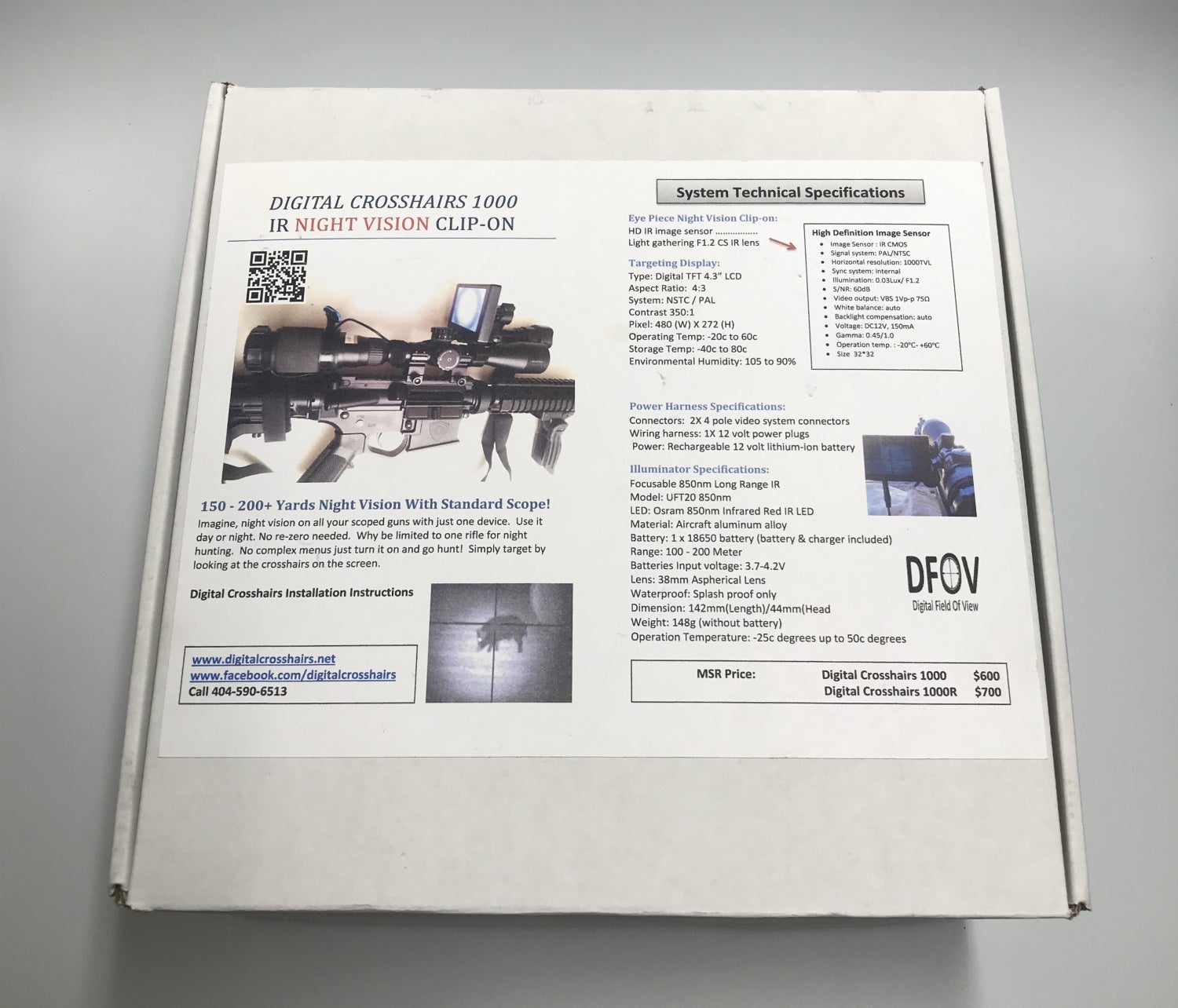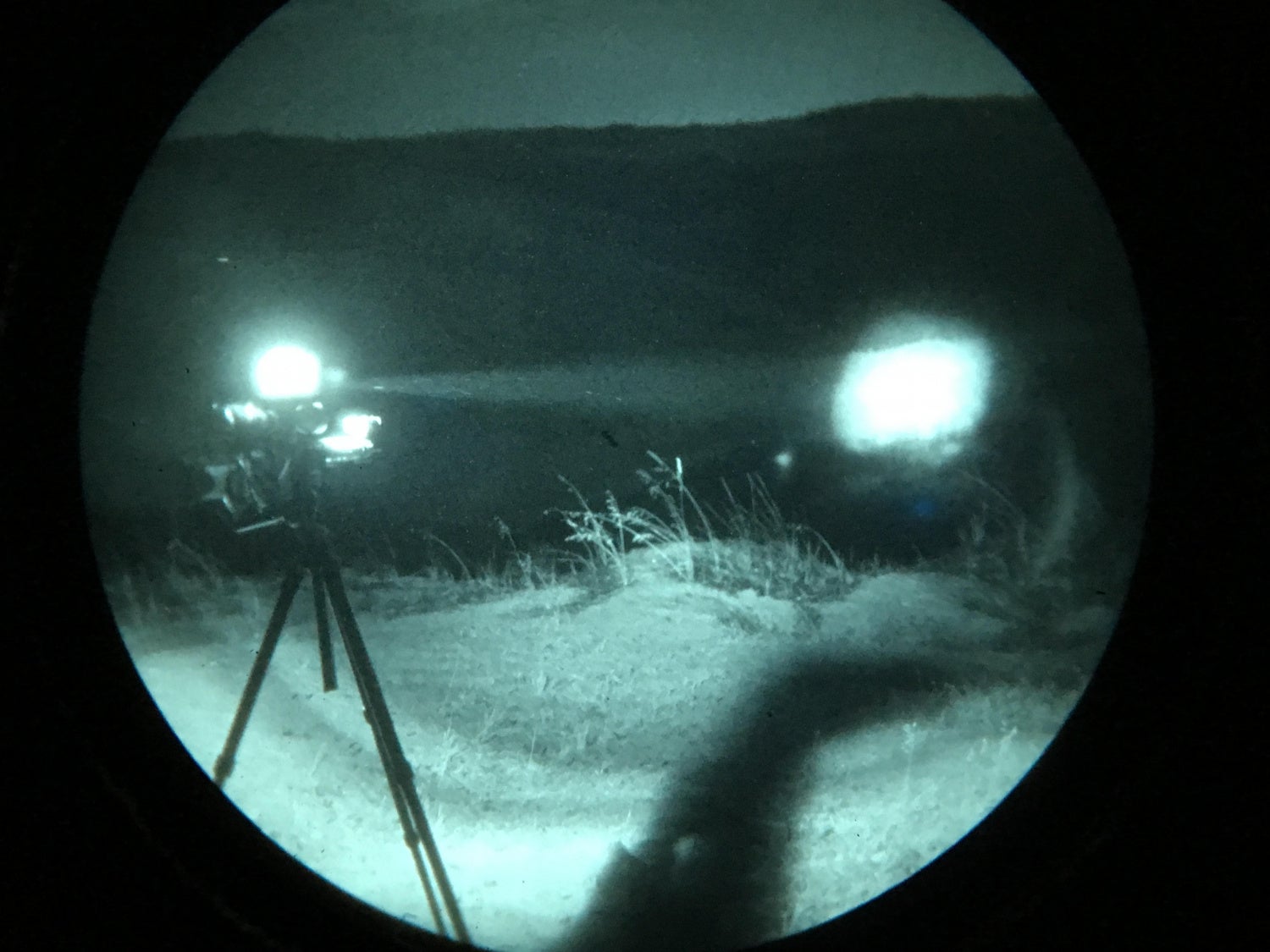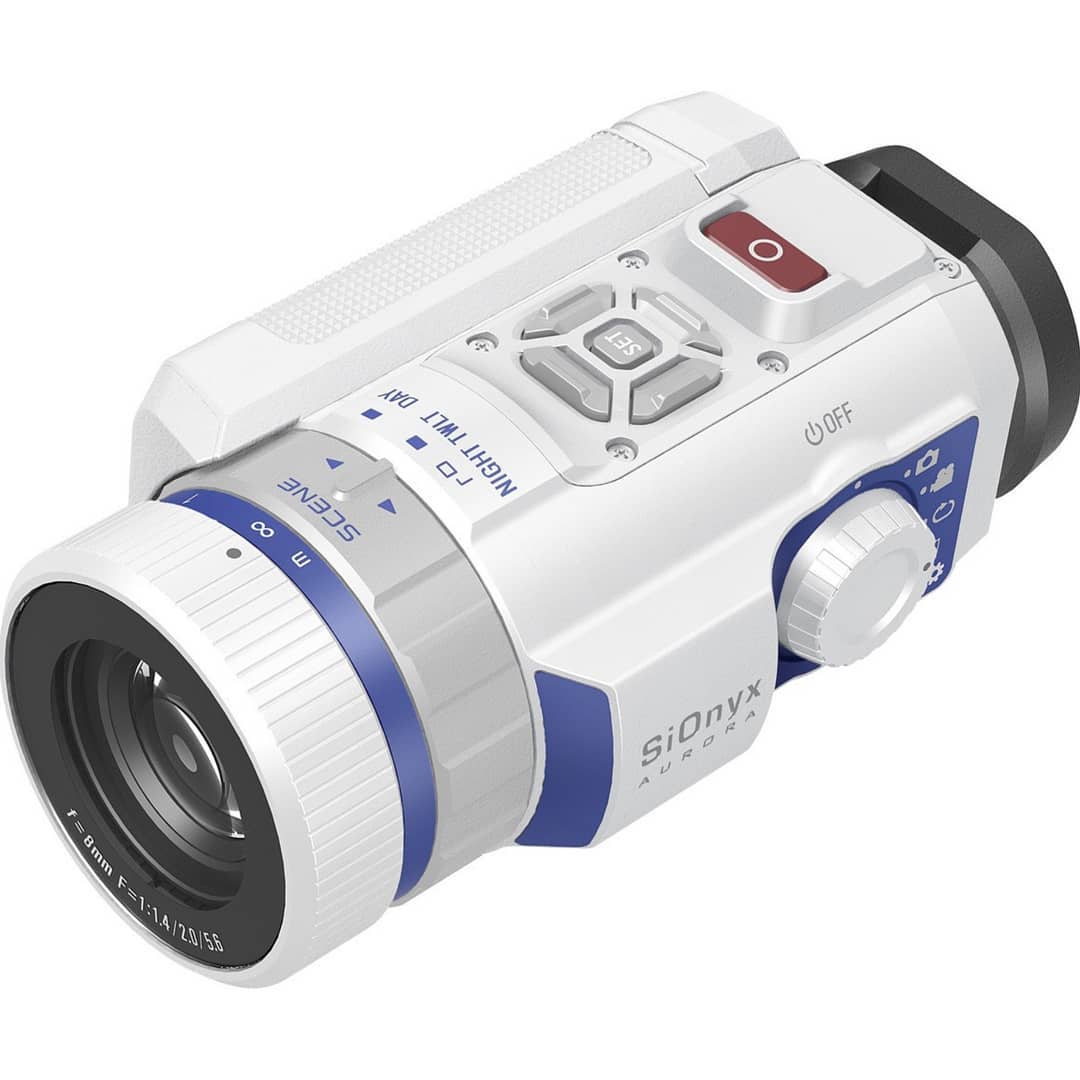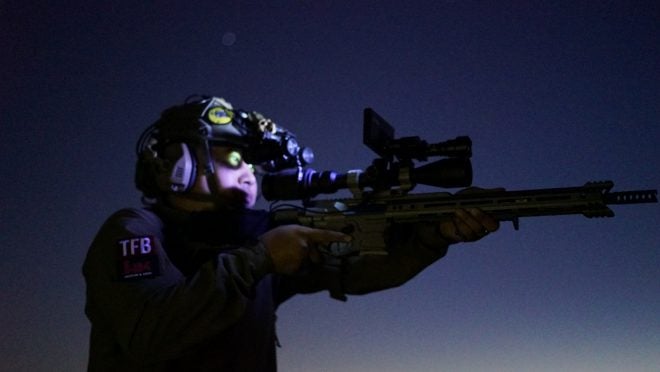An opportunity arose when Digital Crosshairs reached out to TFB. They wanted us to review their Digital Crosshairs 1000R which is a digital night vision camera system that clips onto your scope. The 1000R only retails for $700 ($600 on sale at the time of this article) so I figured it might be an interesting item to review for those looking to get night vision on the cheap.
Digital Crosshairs 1000R

Night vision is stereotypically expensive. A $700 night vision clip-on sounds too good to be true. Let’s take a closer look at the Digital Crosshairs’ 1000R night vision camera system.


The 1000R consists of a number of components to complete the digital night vision setup. The heart of the system is a digital camera that has the IR filter removed so it can see IR light. It is housed inside a PVC pipe and rubber collar. It uses a hose clamp to secure it to your scope’s eyepiece.



The hose clamp screw head is a square. The 1000R came with a special plastic tool to tighten and loosen this screw. I would have preferred a traditional hex head with a slot for a flat head screwdriver so I do not have to use that special tool or carry a crescent wrench with me every time I want to remove the camera or reinstall it.

The second component to the Digital Crosshair 1000R is the LCD Screen and IR illuminator.


The IR illuminator is really a zoomable IR flashlight held onto a scope mount which is attached to a metal bar with a hole and set screw. The metal bar with the hole holds the plastic bar on the LCD screen as you can see in the photo above. It uses a tall scope mount to attach the entire setup to a scope. The 1000R comes with a rail that attaches to your scope body so you can mount the LCD and IR illuminator.


This 1000R also came with an IR filter so you can use and test the night vision camera system in daylight. The 1000R digital camera is like any regular digital camera but it has the IR filter removed. It is probably an off the shelf night vision security camera. But by adding the IR filter between the camera and your scope eyepiece you filter out the IR light so the image does not get washed out in the day time.

The IR filter has a piece of hand-cut felt on one side and a rubber gasket on the other.

The third and final component of the Digital Crosshairs 1000R night vision camera system is the power supply which has the optional mini DVR. This power supply comes with a nylon pouch that you strap to your stock. It has two leads to plug into the digital camera and LCD display. This pouch is the brains of the system. Not only does it power the camera and LCD display but it relays the video from the camera into the LCD display as well as the mini DVR.

The power supply has a small microphone so the video from the camera and audio from the mic is recorded by the mini DVR.

The amount of wires to make the 1000R work is a bit of a birds nest. The heat shrinked object is the microphone to pick up audio for the mini DVR.

The on/off switch is located on the side of the battery. Flipping it on powers up everything except for the mini DVR. The mini DVR has its own onboard power supply and is recharged with a micro USB cable and USB charger.

Using The 1000R
I am going to be honest. The 1000R is not great. It works but just barely. I had some issues with the mini DVR so I was unable to capture the image cleanly from the 1000R digital camera. But at night I could only see about 200 yards away and the image was not that crisp. Inside of 100 yards, the 1000R looks better. As advertised, you can see in the dark.
One of the issues I have using this system is that I have to dial in my scope’s diopter, the ring that adjusts focus for the eyepiece. Why is this a pain? Because you cannot adjust it if the camera is mounted to the eyepiece. So you have to pull the camera off, adjust the diopter, put the camera back on and check the image. Still not good? Repeat multiple times. Sure I suppose once it is dialed in then you can just leave it right? Yeah if you never want to use your scope in the day time again. If you pull off the camera, your diopter will be totally off for your eye. Yes, you can readjust it back but now you have to go through all that hassle again of resetting it back for the 1000R camera.
There is an easier way to alleviate this problem but it requires a different style of scope. Get a scope that has an adjustable objective focus. Then you can dial your focus on the fly with the camera mounted to the eyepiece. I don’t have scopes like that so you can understand my frustration. I do not want to buy a new scope just to use with this system. And typically adjustable objectives are a feature of low-grade scopes.
The other issue is how do you scan with this setup at night? I suppose you could get a spotlight with a red filter and some binoculars but that just complicates this whole setup and defeats the purpose of night vision which is stealth. Seeing in the dark is only one aspect of night vision. Being undetected by your prey is the second aspect. Otherwise, you could just use really bright flashlights.

As you can see in the photo above and below, the whole Digital Crosshairs 1000R system is buky. It requires the LCD screen and it sits on top of the scope along with the IR flashlight. Then you have cables running to the battery pouch on the side of the stock.

This makes my rifle system a bit cumbersome. I have to disassemble and reassemble it every time I put it in my rifle case or take it out to use it. Another issue is the glow off the LCD screen is rather bright. You can see in the top photo that it illuminates my entire face. The position of the screen is too high for a proper cheek weld. But considering you are only shooting within 200 yards I suppose that it is a minor compromise and not that critical?
The IR flashlight is the best part of this system. It works very well. You can twist the head and get a wide beam or dial it down to a square beam for a farther throw. The only complaint is that there is a lot of light spilling out the edges even though the beam has been constricted for throw. See the photo below. See how much light there is casted on the rifle and on the ground around the rifle?

Final Thoughts
Is there a better way of doing this for a similar or possibly better price point? Yes, there is. The SiOnyx Aurora. For the same price as the Digital Crosshairs 1000R, you could get the Aurora. Just earlier this week SiOnyx launched their budget entry level Aurora Sport which will retail for only $399. The difference is the Sport lacks GPS functionality.

Take a look at the video below. I brought out my SiOnyx Aurora and tested if I could aim through my Vortex scope and see in the dark. I still needed an IR illuminator to brighten up the image through the scope but it totally works and I can see in the night if I move my head away from the scope.
Here is a better video comparing similar distances through the Aurora and the video from the 1000R. There was a lot of wind and there was a half moon out which makes the Aurora look a lot better.
For the same amount of money as the Digital Crosshairs 1000R, you can get the Aurora Sport, a mount and helmet to see in the dark or buy SiOnyx’s weapon mount. Although the Aurora is only rated for up to 5.56. In all honesty, you could take a 200-yard shot without a scope and just use a laser with the Aurora if you had to. But for positive ID and target recognition, you could still look through your day scope with the Aurora.
The Digital Crosshairs 1000R does not work well with high magnification scopes. And given its limited ability to see only 200 yards there is no need for such high magnification. The field of view is too small at 6x. Just think about using the 1000R on a hunt. How will you spot your game? Binoculars and a flashlight? That defeats the purpose of having a night vision system. Night vision is to be able to see in the dark using infrared light or amplify ambient light while being undetected by your prey. The 1000R is just a simple digital camera with no IR filter so while it can see IR light it does not amplify light like true night vision. This is where the Aurora shines. It has a really sensitive camera sensor that on night mode it can amplify light.
Take a look at the footage below. I do not know the distance these hogs were shot but the image is not great and it is out of focus.
The Digital Crosshairs 1000R works but it doesn’t work well. It is cumbersome and a pain to setup. You can only see what the camera sees so you are limited to what your scope can see. At night this is not ideal. It is why many proponents of night vision do not recommend mounting a PVS-14 onto a weapon. It is better to wear night vision on your head for scanning your environment. Plus you can walk and see in the dark with actual night vision.
At the price point of $700 (on sale now for $600) the Digital Crosshairs is just too expensive for the lackluster performance. The fit and finish look like something cobbled together in a garage. I have seen 3D printed products that look better than this.
Other than the Aurora, you can find blemished gen 2 night vision for not much more. The PRG Defense P-14 is only $1,000 and uses Gen2 night vision. That is a better investment of your money and has many more uses other than a standalone digital night vision camera like the Digital Crosshairs 1000R. For more information about Digital Crosshairs go to their website.
 Your Privacy Choices
Your Privacy Choices
